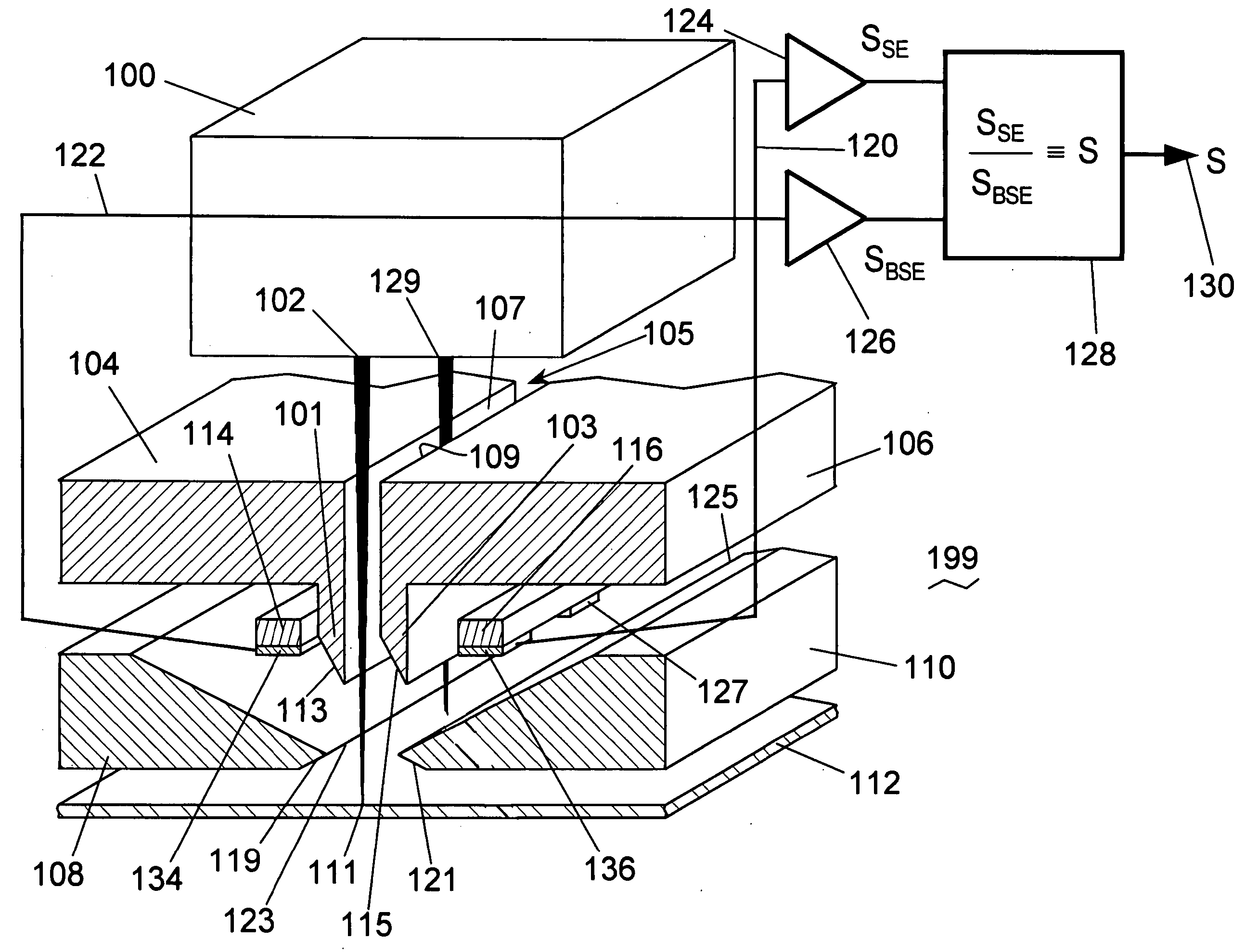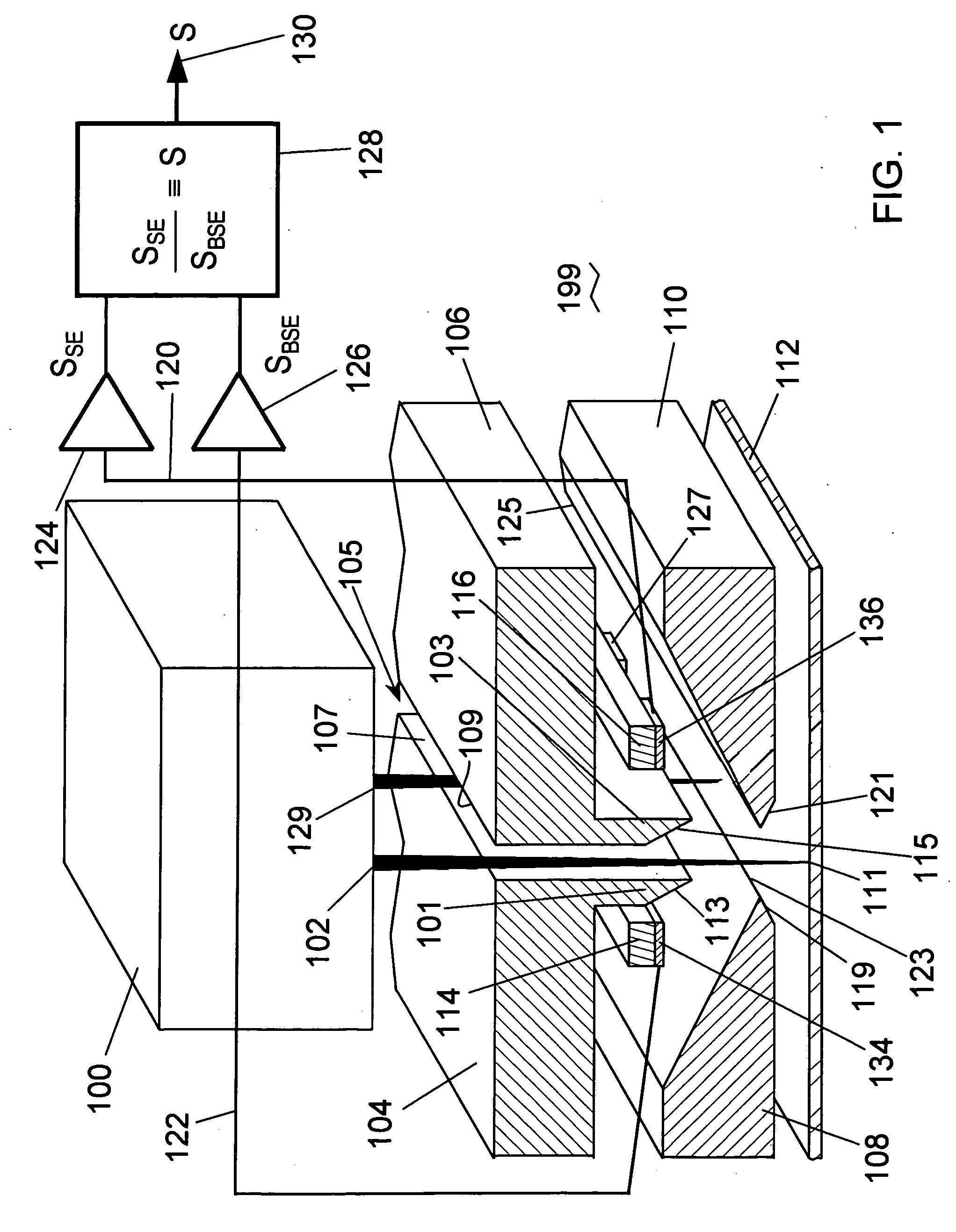Dual detector optics for simultaneous collection of secondary and backscattered electrons
a detector optics and electron detector technology, applied in the field of electron detector optics, can solve the problems of inability to fully separate se and bse signals, cost, undesirable fluctuations, etc., and achieve the effect of reducing cost and complexity
- Summary
- Abstract
- Description
- Claims
- Application Information
AI Technical Summary
Benefits of technology
Problems solved by technology
Method used
Image
Examples
Embodiment Construction
[0050] The present invention disclosed herein is a detector optics system having dual detectors, one with high secondary electron (SE) detection efficiency combined with minimal resultant distortion of the electron beam, and the other for simultaneous detection of backscattered electrons (BSEs). The various detector optics electrodes are designed to make the secondary electron detection efficiency a nearly linearly-varying monotonic function of the substrate surface voltage, while the backscattered electron detection efficiency remains independent of the substrate surface voltage. Both the SE and BSE signals are proportional to the current in the primary electron beam which induces the emission of both the SEs and BSEs. The ratio of the SE and BSE signals, however, is independent of the current in the primary electron beam and is also a rapidly-varying monotonic function of the substrate surface voltage, enabling surface voltage measurements to be made at high bandwidth without fluc...
PUM
| Property | Measurement | Unit |
|---|---|---|
| energy | aaaaa | aaaaa |
| energy | aaaaa | aaaaa |
| emission angles | aaaaa | aaaaa |
Abstract
Description
Claims
Application Information
 Login to View More
Login to View More - R&D
- Intellectual Property
- Life Sciences
- Materials
- Tech Scout
- Unparalleled Data Quality
- Higher Quality Content
- 60% Fewer Hallucinations
Browse by: Latest US Patents, China's latest patents, Technical Efficacy Thesaurus, Application Domain, Technology Topic, Popular Technical Reports.
© 2025 PatSnap. All rights reserved.Legal|Privacy policy|Modern Slavery Act Transparency Statement|Sitemap|About US| Contact US: help@patsnap.com



